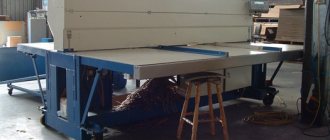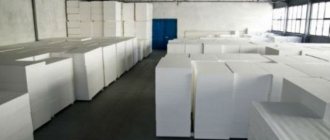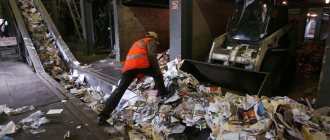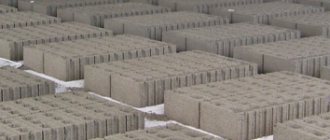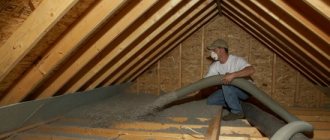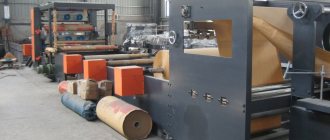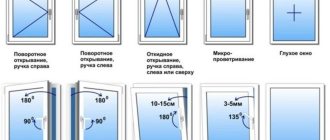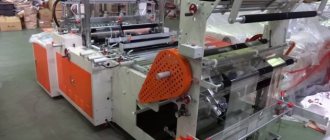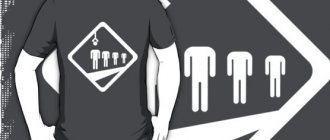Corrugated boxes are cardboard products used for packaging a wide variety of goods, from food to appliances and large equipment. Corrugated packaging is the most common packaging material in the world and in Russia. It is popular due to its low price, convenience and quality.
The corrugated cardboard business has high monthly revenue and net profit. The article will tell you about the main stages of starting a business. You will also become familiar with approximate economic calculations and important details of business organization.
1. Areas of application 2. What types of corrugated cardboard are there? 3. Main types of packaging material 4. Advantages of packaging material 5. Disadvantages 6. Corrugated cardboard market in Russia 7. What is needed for production? 8. Technology for the production of three-layer corrugated cardboard 9. Documentation 10. Premises 11. Personnel 12. Equipment 13. Raw materials for the production of corrugated cardboard 14. How to organize sales of finished products? 15. Calculations of profitability and payback: financial plan
Areas of use
Corrugated cardboard is used for the production of boxes, packaging for devices, equipment and other goods.
The variety of types of corrugated packaging allows it to be used for packaging products, including bulk food products.
Used as packaging material:
- in the food industry;
- for perfumery;
- in the pharmaceutical industry;
- for household goods, household chemicals;
- in the alcohol industry;
- for tobacco products;
- for souvenirs.
In Russia, the largest share (38%) in terms of corrugated cardboard consumption is occupied by the sub-sector of alcoholic and non-alcoholic products.
What types of corrugated cardboard are there?
There are several types of corrugated boxes. Profiles differ in their properties and structure and are marked with letters.
Table 1. Profile table.
| Material name | Wave height, mm | Wave repeatability, mm | Number of waves/mm | Max. thickness, mm |
| C-profile | 3,66 | 7,95 | 126 | 4,20 |
| B-profile | 2,50 | 6,50 | 153 | 3,00 |
| E-profile | 1,16 | 3,50 | 285 | 1,60 |
| F-profile | 0,75 | 2,40 | 415 | 1,20 |
| G-profile | 0,55 | 1,80 | 555 | 0,98 |
| N-profile | 0,40 | 1,50 | 666 | 0,83 |
The material of different profiles has different gradations of corrugations per linear meter.
According to the number of layers, there are 2-, 3- and 5-layer cardboard. Marked with the letters D, T and P, respectively. The most common - 3-layer cardboard - has 2 flat and 1 corrugated layer.
There is also a 4-layer variety, but it is rare.
How much can you earn from this business?
The profitability of production largely depends on the workload of the line, which in turn depends on the availability of established sales channels for corrugated cardboard. Ideally, the line should be busy for the entire 8-hour working day every working day of the month. In practice, the equipment works only 40-50% per month. The average productivity of small enterprise lines is from 100,000 to 200,000 meters of corrugated cardboard per month. With a market price of 7 rubles per meter, the monthly turnover of the enterprise is about 1.2 million rubles.
The profitability of the corrugated cardboard production business is estimated at 15 - 20%.
Main types of packaging material
There are several main types of packaging:
- Boxes and boxes. These are cardboard boxes of standard (open, closed), non-standard type (folding, wrapping, tubes and pencil cases) and models with modifications (with locking connections, valves, group).
- Containers. Large packages for oversized cargo. They usually have a reinforced bottom. They are made from five- and even seven-layer cardboard.
- Trays. Boxes without lids. Used for transportation and storage of food, vegetables, fruits. Can be covered with cling film.
- Shells. They are not packaging in the standard sense. These are wide cardboard rims into which goods are “embedded” (for example, frying pans, fabrics).
Criteria for selecting equipment for the production of corrugated packaging
The main questions that determine the choice of equipment for the production of corrugated packaging are “What are the production volumes?” and “What types of corrugated cardboard packaging are you planning to produce?” Producing small runs (less than 1000 packages per month) is unprofitable.
Having answered these questions, you should decide on the types of equipment. There are machines with a similar operating principle, automatic and semi-automatic. In the latter case, the productivity of the machines is determined. For example, rotary die cutting machines are much more productive than flat die cutting machines, but are more expensive.
Advantages of packaging material
These are the advantages that encourage manufacturers to use this particular packaging.
Firstly, low price. Cardboard is created from wood and recycled materials. Manufacturing regular corrugated cardboard does not require much energy.
Secondly, sufficient rigidity. The contents in the container are protected from both dirt and damage during movement/storage. The corrugation absorbs and evenly distributes weight. The boxes have good capacity, clear shapes and are light in weight. Very convenient for all market participants - from manufacturers to end consumers.
Thirdly, environmental friendliness. The material is harmless to humans, so a wide variety of goods can be stored in it.
Fourthly, drawings and information can be applied to the surface of the cardboard. That is, it is also a marketing tool.
Flaws
Containers made from this material also have disadvantages. You need to remember them:
- Boxes absorb moisture and do not protect the contents from dampness. When saturated with liquid, the material loses its properties, swells, becomes soft and falls apart.
- Cardboard is made from cellulose, which is a completely natural product. Therefore, it is not able to protect against rodents. Mice and rats can easily chew through the container and get to the product inside.
- The material has low heat resistance, ignites in moments and also burns quickly. In case of fire, corrugated packaging will not protect the goods.
- It is impossible to see the contents behind the thick boxes. The problem is solved by color printing, applying images of the product on the surface of the cardboard or cutting out small “windows”. This increases the cost of corrugated packaging.
Corrugated cardboard market in Russia
The situation on the Russian market is twofold. Material consumption continues to grow. At the same time, the market is self-regulating and redundant enterprises are being liquidated.
At the beginning of the 2000s, significant investments were made in the production of corrugated cardboard. In 2008, there was a peak in market development. Large volumes of goods were supplied both to the domestic market and to the markets of the CIS countries. Under these conditions, more and more new manufacturers opened up. By 2013, the capacity surplus was about 30%.
Recently, a global trend has emerged to increase the cost of cellulose. It became less profitable to produce cardboard, which is why many small companies ceased operations. Currently there are 10 large enterprises and about 150 medium and small enterprises operating in the market.
Opening a corrugated cardboard plant is promising, but it needs to be done:
- in a region where there is no large manufacturer;
- if you find an inexpensive supplier of raw materials.
What is needed for production?
Setting up a plant requires large investments. In total, you will have to invest more in the purchase of machines. According to the terms of our business plan, an automated production line LGK-125E is purchased. In monthly expenses, more funds will be spent on the purchase of raw materials.
Table 2. Start-up costs for a corrugated cardboard business.
| Expense item | Cost, rub. |
| Registration, certification | 30 thousand |
| Premises for rent, 700 sq. m | 350 thousand |
| Equipment | 5.3 million |
| Raw materials (for a month - subject to full load) | 1.4 million |
| Salary, 12 people. | 350 thousand |
| Additional expenses | 150 thousand |
| Total | 7.58 million |
The calculations are relevant for a city with a population of up to 1 million people. Additional expenses include costs for utilities, advertising, and cosmetic repairs.
How much money do you need to organize corrugated cardboard production?
Opening a corrugated board manufacturing plant will require significant investment. We are talking about hundreds of thousands of dollars. The thing is that production is quite technological and requires the purchase of expensive equipment. Although today you can find offers to purchase a ready-made business for the production of corrugated cardboard packaging at a price of 3 million rubles and above. These are enterprises that produce not corrugated cardboard, but ready-made packaging from purchased corrugated cardboard sheets. In other words – processing enterprises. By purchasing such a used plant, you receive machines, auxiliary equipment, documentation for doing business and, in a sense, “an established customer base.” The capacity of such production facilities, as a rule, allows the production of boxes for pizza, cakes, furniture, shoes and large-sized packaging.
If you have already decided to produce the primary product of corrugated packaging - corrugated cardboard, then the first and main investment will be the acquisition of a corrugated cardboard production line. The equipment of the line largely depends on the layer thickness of the cardboard that is planned to be produced. There are two-layer, three-layer, five-layer and seven-layer corrugated cardboard.
Double-layer cardboard consists of one wavy layer of fluting and one flat layer of liner. This is the only flexible type of corrugated cardboard, most often used for wrapping or some auxiliary parts, since it cannot be assembled into a rigid structure. Only cylindrical tubes are obtained from it that are more or less rigid.
The most popular is three-layer corrugated cardboard. This packaging consists of one corrugated layer and two flat layers of cardboard glued on both sides. Three-layer corrugated cardboard is considered a classic of corrugated packaging. Solid boxes for shoes and clothes and pallets are made from three-layer corrugated cardboard. It is also used to make inserts used inside packages for fragile products.
Five-layer corrugated cardboard is used for large packages, since its strength is an order of magnitude higher than its two- and three-layer analogues. The layers of five-ply corrugated cardboard alternate in the following order: flat inner - first corrugated - flat middle - second fluting - outer liner. Five-layer corrugated cardboard is suitable for durable boxes in which food products, vegetables and fruits, and groceries are transported.
Production technology of three-layer corrugated cardboard
The technology of “cardboard” production is as follows:
- Preparing cardboard and corrugated paper. It is carried out for 24 hours in a room with a temperature above 15°C. During this time, all excess moisture will evaporate from the raw material.
- The raw material is supplied to unwinders, where it is unwound, then heated and moistened. This is how paper and cardboard are prepared for impregnation with glue.
- Sheets of paper are created on a corrugating press. The equipment is corrugated using special shafts with teeth. At a temperature of 180°C, a wavy layer is formed - fluting.
- Glue is applied to the cardboard using a glue roller, and then corrugated paper is fixed to it. The glue is applied to the second flat layer of cardboard, which is glued to the corrugated paper on the back side.
- The materials enter the pressure roller, which forms a three-layer cardboard.
- The finished material enters the drying chamber, where the glue finally hardens and excess moisture is removed from the paper.
BHS line
Corrugated five-layer cardboard is used to produce particularly strong and rigid packaging. For example, packaging of meat processing products, vegetables, fruits. Also for the production of large-sized containers: packaging for refrigerators, washing machines. Depending on the purpose of the container, corrugation of the “BC” profile is used; the combination “BB” is rarely used.
Corrugator BHS
bhs line for the production of 5-layer corrugated cardboard, installed on a new corrugator, is designed to produce 5-layer corrugated cardboard with profiles B, C and E. It is also possible to use corrugated cardboard with profiles A, K, F.
BHS lines for the production of 5-layer corrugated cardboard to produce a high-quality product perform the following operations:
- installing a cardboard roll on a rolling device;
- pre-heating of cardboard;
- cladding of glue on a specialized gluing installation;
- gluing 2-layer corrugated cardboard with a heated liner, forming a five-layer corrugated cardboard;
- drying corrugated cardboard.
After unwinding, the paper batting goes into a corrugated press, in which the paper is corrugated using two rollers and heated steam. Starch glue is applied to the top of the corrugation on the upper side. Next, the cardboard material goes into another corrugated press where the corrugated sheet is connected to the cardboard. This process results in 2-layer corrugated cardboard.
BHS line for corrugated packaging production
Next, the material from two-layer corrugated cardboard is laid in the shape of a loop to create some reserve and uninterrupted operation of the corrugated installation. After which, the material is transferred to the heater and fed to the gluing unit.
Gluing machine 5-GM-250
Starch glue is applied there. 2-layer corrugated cardboard is combined with other cardboard material. Thus, a three-layer corrugated cardboard is formed. To produce five-layer corrugated cardboard in a corrugated installation, there is another corrugated press.
The glued layers of corrugated cardboard enter the drying apparatus, in which excess moisture is released and the material is firmly glued together in the layers. At the end, rotary scissors are fixed. They are needed to eliminate substandard workpieces and ensure transition to the next stage.
And also to change the size of the workpiece. The finished canvas goes into a special scoring and cutting unit, in which strips of the required width are cut and the edges are trimmed at the same time. The line of the next fold of the canvas is also drawn there in order to correctly form the box.
After that, the material is cut into a sheet of the required length, resulting in a workpiece completely ready for subsequent processing. Subsequent manipulation of the sheets is carried out on the processing line.
Documentation
To organize the production of corrugated packaging, you need to register as a legal entity (LLC).
Before submitting documents to the Federal Tax Service, you should consult a specialist or entrust this work to an accounting service. In addition to standard documents, it is necessary to prepare the Charter of the LLC, the Decision to create an enterprise (if the businessman is the sole founder).
When compiling papers, the OKVED code 17.21 “Production of corrugated paper and cardboard, paper and cardboard containers” is indicated.
The product must comply with TR CU 005/2011 “On Packaging Safety”, which takes into account the requirements of GOST R 52901-2007 “Corrugated cardboard for product packaging”.
Organizing a business step by step
At the first stages of organizing corrugated cardboard production, it is necessary to familiarize yourself with the requirements imposed by government agencies for this type of activity. This business does not require licenses; to open it you only need to register with the tax office.
Registration of a manufacturing enterprise, documents
When registering a company, you will have to choose one of two legal forms: LLC or individual entrepreneur. In this particular case, it is advisable to give preference to the first option, since the production of such products involves cooperation with large companies and government organizations. Registration of a limited liability company is carried out in several stages:
- preparation of a package of documents (application, passport of the founder, charter of the company, information about the authorized capital, decision to establish a legal entity, receipt confirming payment of the state duty);
- handling documents to the tax authority;
- choice of taxation system;
- receiving a registration certificate within 5 working days.
When preparing documents, the OKVED code corresponding to the activity must be indicated, in this case – 17.21 (Production of corrugated paper and cardboard, paper and cardboard containers).
As a tax burden for such a business, the simplified tax system with a rate of 15% of profit is best suited.
Production premises and warehouses
The production of corrugated cardboard and containers from it will require large areas on which the production line will be located, as well as warehouses for storing raw materials and finished products. The minimum area for setting up a production workshop should be 800 m2, for packaging - 800 m2, and for two warehouses - 500 m2 each. It follows from this that the total area for production will be from 2,600 m2. In addition, it is necessary to ensure the availability of a sanitary facility and rooms for staff needs. Production workshops are equipped with a hoist (lifting device) or an electric forklift. From communications it is necessary to have:
- electrical networks;
- cold and hot water supply systems;
- heating;
- ventilation system.
The indoor climate must comply with established standards: air temperature not less than 18 C°, humidity level not more than 17%.
Purchase of equipment
To produce corrugated cardboard, you will need a set of production equipment, which includes the following devices:
- mechanism for unwinding rolls (rolling);
- pre-conditioner (for heating and humidifying raw materials);
- corrugating press;
- glue application apparatus;
- storage bridge;
- drying unit;
- machine for longitudinal and transverse cutting.
To produce corrugated cardboard packaging, the production line must include a number of elements:
- cutting and scoring equipment;
- die cutting device;
- automatic press;
- digital printing machine;
- folder-gluer mechanism.
Each of the units can be purchased separately, but the ideal solution would be to purchase a complete production line. In this case, the machines will already be adjusted to work with each other, and the supplier will provide assistance with launching the entire system at once.
Raw materials
The choice of raw materials for production must be treated with special attention. In order for the finished product to be of high quality, paper and cardboard must meet certain standards. To operate the enterprise you will need:
- paper with a density of 100–140 g;
- cardboard with a density of 150–240 g;
- starch or silicate glue.
Formation of staff
The technological line for the production of corrugated packaging provides for the most automated production, but despite this, the enterprise will need a staff of employees in an amount depending on the scale of activity:
- a specialist responsible for the operation of equipment producing corrugated cardboard;
- operator servicing machines that produce containers directly;
- loader;
- cleaner;
- equipment adjuster;
- supervisor;
- accountant;
- purchasing and sales manager.
In the future, in the process of developing activities, it will be necessary to purchase vehicles for transporting raw materials and finished products, as well as to include drivers in the staff.
Room
To organize a modest plant, a large area will be required - about 700 square meters. m. Most of it will be occupied by storage areas where shelving needs to be installed. Raw materials and finished products will be stored here.
The work shop will house a production line and a flexographic machine.
Arrange a room for staff - a locker room, a rest room, a bathroom. Records will be stored in the administrative office.
There are requirements for the production workshop: ceiling height – no less than 3 m, air temperature – no lower than 18°C, humidity – no higher than 80%.
Premises for a mini-factory can be rented in the industrial area of the city or on the territory of old factories. In the latter case, repairs will have to be made.
Staff
The production line is automated; personnel are required to monitor the operation of the equipment and to maintain it.
It is important to hire a technologist who will monitor the serviceability of equipment, the technological process, and the manufacture of the product. Some manufacturers provide staff training when purchasing equipment from them.
5 people will service the equipment. Three operators are responsible for the production of corrugated boxes, two for the process of scoring and creating packaging.
Two more workers will be involved in loading and unloading operations and work in warehouses.
You also need to hire a sales manager to create a sales network and a logistics driver (you can bring your own car). You will also need an accountant - to begin with, you can hire him part-time.
To create a design for printing on packaging, contact a designer. You can work with it remotely.
Cardboard production technology: stage one
The cardboard manufacturing process consists of two stages: preparation of raw materials and processing of products. The first stage includes the following operations: dissolving waste paper in a special pulper; cleaning the raw material mass from foreign elements and large ingredients, which is carried out in a vortex cleaner of high concentration; additional dissolution of the already purified mass in a pulsation mill; final fine cleaning.
After this, the finished raw material mass enters the container of the composite pool. Here starch, alumina and rosin glue are introduced into its composition. Finally, the mixture undergoes another additional fine cleaning - using vortex cleaners and knotters.
Equipment
In the business plan, we expect to use the LGK-125E production line, consisting of:
- vacuum corrugated press with pneumatic shaft clamping;
- storage bridge;
- rod rolls, 3 pcs.;
- paper and cardboard heaters, 3 pcs.;
- drying and cooling machines, 1 pc.;
- slitting and scoring sections, 1 pc.
Line dimensions (L×W×H): 25m × 2.6m × 2.1m. Productivity – 30 m/min. Power is 180 kW. There is a vacuum clamp and an automatic glue supply system. Cost – 3.6 million rubles. The presence of a scoring section helps in organizing the production of corrugated cardboard.
It is also planned to purchase a flexographic printing machine FP-10/1100 for applying designs to cardboard. Its cost is 1.7 million rubles.
What equipment to choose for production
The corrugated cardboard production line includes: rails and trolleys for feeding reels, an electromechanical roller for reels, a hydraulic roller for reels, heaters or preconditioners, a vacuum cardan corrugator, a cassette corrugator, a storage bridge, a slitting and cross-cutting unit with a sheet stacker, a drying-cooling table. Optionally, the line can include a glue kitchen, a knife for cutting out defects, and a device for separating the web after longitudinal cutting.
On average, the productivity of such lines is 100-150 meters of corrugation per minute.
Raw materials for corrugated cardboard production
The main raw materials required for the production of corrugated cardboard are cardboard (150-235 g/m2) and paper (100-140 g/m2).
To make flat layers, so-called liners are used. These devices differ in their composition and properties - in general, they increase the strength of packaging, improve its characteristics, and are also suitable for printing advertisements.
The liners are subjected to special treatment to give the container water-repellent and frost-resistant properties.
Corrugating paper is called fluting. Consists of recycled materials that have undergone multi-stage processing. Fluting is designed to create an inner layer.
It is also necessary to purchase glue and paint for advertising. Several types of glue are used, the most common is an adhesive composition made from a mixture of starch, borax, caustic, diluted in water.
Corrugated packaging production line
The production scheme for corrugated cardboard is quite simple: gluing sheets of liners and corrugation. However, in order to increase their profits, manufacturers use secondary raw materials (this will require several additional machines) and make finished containers (also on special equipment).
Depending on the configuration, the cost of the production line varies significantly. Manufacturing plants operating in Russia and abroad offer different prices for their products. In this area, there are no compelling arguments to consider domestic equipment to be of lower quality. In case of problems with the business, it is easier to sell a corrugated cardboard production line on a turnkey basis than to sell the machines in parts.
A line of equipment for corrugated cardboard will cost at least 3-4 million rubles
Equipment
Before considering manufacturing technologies, it is worth identifying in more detail the equipment for the production of corrugated packaging:
- roll for rolls;
- corrugated press;
- vacuum tension apparatus;
- glue spreading machine;
- drying and cooling table;
- slitting machine;
- electric forklift;
- sheet spreader
An average power line will cost an average of 3 million rubles. If the company plans to use recycled materials, it will need equipment for processing waste paper. Machines for the production of boxes complement the line and will allow the company to produce products ready for sale, and not just sheets of corrugated cardboard.
Technologies
To produce corrugated cardboard, a large room is required, at least 800 sq.m. It should be warm and relatively dry: a minimum of 18 degrees and a maximum of 80% humidity. First, liners with a density from 150 to 235 g/m2 and corrugated paper from 100 to 140 g/m2 are selected. Before production, rolls of cardboard and paper must be warmed up: kept in a warm room for 24 hours.
The rolls are secured on unwinding machines, where they are moistened and heated. This will help the glue penetrate deeper into the structure of the material, that is, provide the necessary strength. The paper is processed on a corrugated press and sent to a gluing machine. Glue is applied only to the peak points of the corrugations.
Then the paper is placed on sheets of cardboard, and they are held together under pressure from the equipment. Double-layer corrugated cardboard is ready. If it is necessary to apply new layers of liners and corrugated paper, the two-layer material is sent along a conveyor belt to a storage bridge and to a gluing machine, where all operations are repeated.
When all the layers are combined, the material is sent to the drying machine, where the corrugated cardboard reaches its final readiness. During the drying process, all excess moisture is removed, and the glue hardens. The sheets are sent for cooling and cutting. Now they can be used to produce containers.
The qualitative characteristics of corrugated cardboard allow it to be used for transporting heavy and fragile loads
Raw materials
For corrugated cardboard, 2 types of raw materials are used:
- cardboard (from 150 to 235 g/m2);
- paper (from 100 to 140 g/m2).
It is beneficial to use recycled materials - waste paper. This helps to significantly reduce the cost of products. However, you can use new cardboard by purchasing it from manufacturers. It is customary to use brown and white liner, coated and uncoated. There are craft and test liner, which differ in the ratio of their constituent components.
Buying paper for the production of corrugated cardboard is not a problem: many enterprises sell them in bulk, in convenient sheets. Some offer already corrugated sheets that do not need to be processed on a corrugated press. This is suitable for novice entrepreneurs who have not formed their own production line.
Glue
How to choose adhesive for corrugated cardboard? To produce this packaging material, an adhesive composition of starch, water, borax and caustic is used. You can use any starch: corn, potato or wheat. All of them provide high strength and good grip quality. To improve the quality of the glue, hydrophobic additives are included in its composition. They increase adhesion and take corrugated board production to the next level.
When applied, the adhesive is heated to a temperature 10-15 degrees below the degree of hardening.
There are 2 methods of applying glue: contact and non-contact. In the contact method, glue is applied directly to the surface of the paper. The non-contact method involves spraying the adhesive over the surface at a distance of about 1 cm. You can mix the adhesive yourself or buy it ready-made. The second option is more expensive, but guarantees quality.
How to organize sales of finished products?
Corrugated packaging is not a consumer product. Various manufacturers need it more, so advertising should be targeted at them.
You can advertise in the following ways:
- Creation of an official website indicating the range and prices. Pay attention to online promotion of the site in search engines.
- Publication of advertisements on websites.
- Distribution of advertising and commercial offers to the postal addresses of potential customers.
- Publication of advertising in thematic magazines and publications.
- Personal contacts and negotiations with customers.
Corrugated packaging may also be needed by end consumers. Agree to sell your goods in wholesale and retail chains.
The best option is to enter into agreements on long-term cooperation and orders. Supplying products in bulk will allow you to occupy the capacity of the enterprise, increase turnover and net profit.
